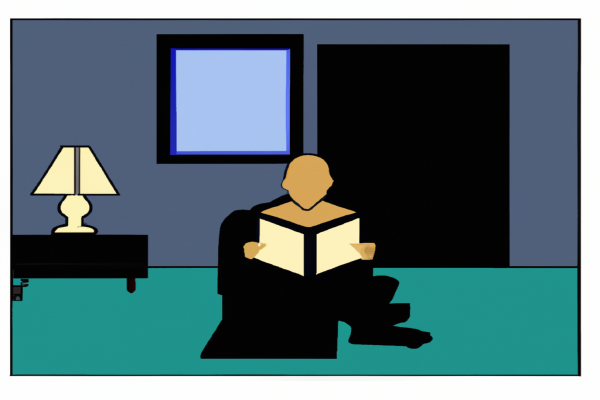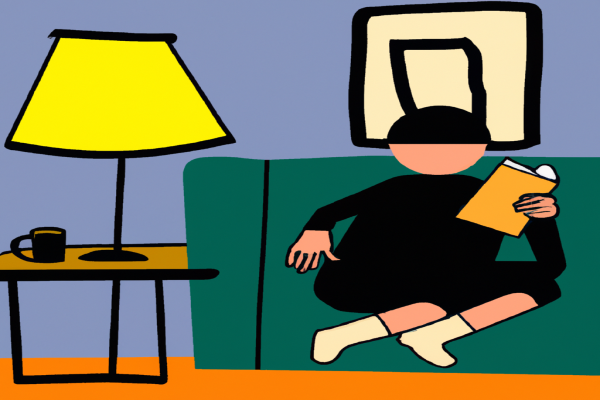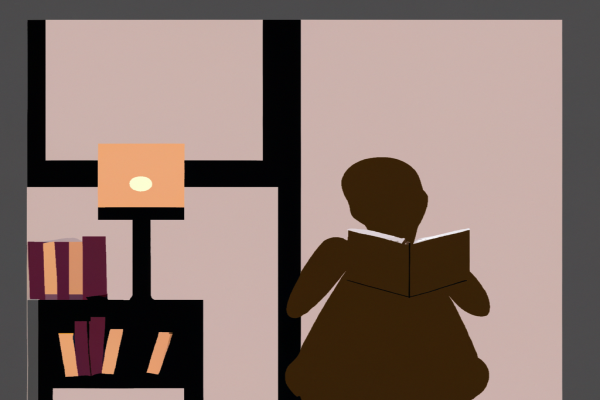The Scarlet Letter: Summary

The Scarlet Letter is a classic novel by Nathaniel Hawthorne set in the Puritan society of 17th century Boston. It follows the story of Hester Prynne, an adulteress, who is publicly shamed and forced to wear a scarlet letter "A" on her chest to symbolize her sin. As the novel progresses, Hester's strength and courage are tested as she struggles to create a life for herself and her illegitimate daughter Pearl, despite the prejudices of the Puritan society. Along the way, secrets about her past are revealed and dark truths emerge that challenge everything she believes in.
Want to know more?
What is The Scarlet Letter about?
The Scarlet Letter is a classic novel by Nathaniel Hawthorne that was first published in 1850. The book tells the story of Hester Prynne, a woman in Puritan Massachusetts who is condemned to wear the letter “A” on her clothing as punishment for adultery. The story examines themes of guilt, sin, and redemption through Hester's experience. It also explores the hypocrisy of Puritan society and its rigid adherence to societal expectations. Other themes include love, identity, justice, and truth.
The Scarlet Letter: Book Club Questions
- What are the major themes of The Scarlet Letter?
- How do the characters in The Scarlet Letter represent different aspects of Puritan society in 17th century Boston?
- What is Hawthorne's message about guilt, shame and redemption?
- What symbolism is used throughout The Scarlet Letter?
- How does Hester Prynne's character development compare to that of other characters in the novel?
- In what ways does Dimmesdale's physical health reflect his inner turmoil?
- What motivates Chillingworth's relentless pursuit of revenge against Dimmesdale?
- How does Pearl change over the course of the novel, and how does her relationship with her mother evolve?
- How does Hawthorne use language to convey his themes in The Scarlet Letter?
- In what ways does The Scarlet Letter still resonate today?
What to say about The Scarlet Letter
- The Scarlet Letter is a powerful exploration of how society shapes and restricts individual identity.
- Hawthorne's ability to evoke emotion through his writing is remarkable.
- The Scarlet Letter is a timeless classic that still resonates with readers today.
- It's interesting to consider the ways in which Hester's story reflects the social norms of Puritan America.
- The complex relationships between characters make the novel both captivating and thought-provoking.
- The imagery used throughout the work creates an atmosphere of sorrow and regret.
- The themes of guilt, shame and redemption are explored in depth throughout the book.
- It's fascinating to observe how Hawthorne uses language to convey the inner turmoil of his characters.
- The Scarlet Letter is a vivid illustration of how religious beliefs can be manipulated and abused for personal gain.
- Hester Prynne is an incredibly strong female protagonist - an inspiring role model for generations to come.
Top 5 Quotes from The Scarlet Letter
- "Be true! Be true! Be true! Show freely to the world, if not your worst, yet some trait whereby the worst may be inferred!"
- "No man, for any considerable period, can wear one face to himself and another to the multitude, without finally getting bewildered as to which may be true."
- "A sentiment of reverence perceptibly existed, on the part of every beholder, towards the woman who had endured so much grief with such heroic fortitude!"
- "It is a little remarkable, that—though disinclined to talk overmuch of myself and my affairs at the fireside, and to my personal friends—an autobiographical impulse should twice in my life have taken possession of me, in addressing the public."
- "On that same day came also into the market-place an old woman, a most pathetic figure. She was used to wander about the streets at all hours of the night..."
Adaptations of The Scarlet Letter
TV: 1. The Scarlet Letter (1979, CBS) 2. The Scarlet Letter (1995, TNT) Film: 1. The Scarlet Letter (1926, Paramount Pictures) 2. Hester Street (1975, Avco Embassy Pictures) 3. The Scarlet Letter (1995, New Line Cinema) 4. The Scarlet Letter (2003, Focus Films) Radio: 1. The Scarlet Letter (1939, NBC Radio Network) 2. The Scarlet Letter (1945, CBS Radio Workshop) 3. The Scarlet Letter (1982, BBC Radio 4) 4. The Scarlet Letter (1993, BBC Radio 4) 5. The Scarlet Letter (2006, BBC Radio 7) 6. The Scarlet Letter (2011, BBC Radio 4 Extra) 7. The Scarlet Letter (2014, BBC Radio 4 Extra) 8. The Scarlet Letter: A Play in Three Acts by Orson Welles (2015, BBC Radio 3) Podcast: 1. "The Scarlet Letter" - Librivox Free Audiobook Podcast (2017, Librivox Audio Books) Theatre: 1. The Scarlett Letter by John Galsworthy (1905, Haymarket Theatre London) 2. A Modernised Version of the Scarlet Letter by Wilford Leach and Leonard Petit (1973, Circle Repertory Company Off-Broadway Production) 3. An Adaptation of Nathaniel Hawthorne’s “The Scarlet Letter” by Mary Jo Slater and Robert Allan Ackerman (1981-1982 Broadway Production at the Nederlander Theatre NYC).
Other books by Nathaniel Hawthorne
- The House of the Seven Gables
- The Blithedale Romance
- Twice-Told Tales
- Mosses from an Old Manse
- The Snow Image and Other Twice-Told Tales
- Grandfather's Chair
- A Wonder Book for Girls and Boys
- Tanglewood Tales
- Our Old Home
- The Marble Faun
- True Stories from History and Biography
- Dr. Grimshawe's Secret: A Romance
- Sketches from Memory
- Wonder-Book for Girls and Boys
- Main Street
- A Rill from the Town Pump
- Little Masterpieces of American Wit and Humor
- The Dolliver Romance
- Septimius Felton
- The Confidence-Man: His Masquerade
Did you know?
The Scarlet Letter was the first book written by American author Nathaniel Hawthorne.




